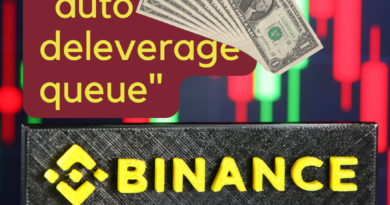Are You Confused With the Concept of TradFi, DeFi and CeFi? Here is an ultimate overview!
TradFi and DeFi together can create an inclusive financial system. TradFi can serve as the regulatory framework to enable DeFi’s development while offering consumer protection and risk mitigation.
Stablecoins could make accepting payments cheaper for businesses, easier for governments to run conditional cash transfer programs, and cheaper for citizens storing wealth outside their local currency – but there are risks involved as well. Discover the power of decentralized finance with EarnCashTeam. Trade in your own control and trade with stablecoins and gain financial freedom.
You can also discver other tips about crypto with us!

What is TradFi?
TradFi stands for the concept of traditional finance. DeFi businesses operate differently from traditional financial institutions in that they provide individuals with more open and transparent access to financial tools in an international and borderless setting. This makes DeFi businesses ideal for marginalized populations such as women, social minorities and citizens of countries with tight regulations on finances.
DeFi products that have proven popular are cryptocurrencies such as Bitcoin (BTC) and Ethereum (ETH), which can be used for everything from remittances and lending, to peer-to-peer exchanges that provide more transparency and efficiency than centralised exchanges, and with significantly lower transaction fees than traditional financial services.
DeFi presents many advantages; however, it also presents several challenges, including scalability and security concerns. Without a central authority to verify participants and prevent money laundering or terrorist financing activities from taking place, identity verification becomes extremely challenging; furthermore many DeFi protocols run on volatile blockchain networks that are vulnerable to hacking attempts.
Traditional finance’s decades-long development can offer new DeFi businesses with tried-and-tested regulatory practices that could assist their smooth integration into established infrastructures – providing more accountability and transparency to users of DeFi. Working together on key sectors like insurance or banking could foster innovation while building user trust; helping ensure more people reap the advantages of digital finance.
What is DeFi?
DeFi (decentralized finance) is an emerging area of finance that allows participants to bypass intermediaries and conduct financial transactions directly between themselves, using blockchain technology for transactions like currency exchange or lending digital assets. DeFi has the potential to open access to banking services for billions around the world who currently lack them, giving them trading and investment capabilities through defiance finance.
DeFi is being driven forward by several key drivers. One such factor is a desire to eliminate middlemen who charge fees for their services. Another is cryptocurrency’s increased popularity; according to Defipulse, cryptocurrency commitments secured through DeFi protocols has skyrocketed from USD 2 billion back in July all the way up to USD 55.11 billion as of this writing.
DeFi protocols based on blockchains offer many advantages over traditional methods of conducting financial transactions, including their public nature allowing anyone to see transaction histories and increase trust in financial markets. Furthermore, blockchains support smart contracts – computer programs which execute terms of contracts automatically – thereby automating processes, reducing costs and improving efficiency while recording results of financial transactions transparently without needing for central authorities or regulators. Put financial control in your hands. With EarnCashTeam, buy and sell your stablecoins in a decentralized financial system, make cross-border transactions and step into the future of the financial world.
What is CeFi?
CeFi platforms resemble conventional finance apps by offering intuitive user-friendly interfaces and features, centralized support systems to enhance trustworthiness, as well as regulations by regulatory bodies to safeguard users’ funds – thus decreasing hacking risks. CeFi’s primary drawback is its high transaction fees due to multiple intermediaries. But there are ways for traders to lower these costs; one option would be using AMM exchange mechanisms which offer liquidity from multiple market makers simultaneously, thus significantly decreasing transaction costs overall.
CeFi platforms tend to be run by centralized institutions that abide by KYC/AML regulations, necessitating them to perform user identification checks and enforce stringent financial services guidelines, making innovation harder. CeFi platforms also tend to experience many issues, including high transaction prices and long wait times, outages (some large centralized exchanges have experienced considerable downtime in the past) and difficulty keeping up with demand for liquidity during periods of high volatility.




